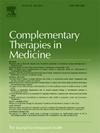Therapeutic effect of acupuncture on post-stroke dysphagia: A multicenter, randomized controlled trial
IF 3.5
3区 医学
Q1 INTEGRATIVE & COMPLEMENTARY MEDICINE
引用次数: 0
Abstract
Background
Dysphagia is a common complication of stroke, significantly affecting patient prognosis and quality of life. Acupuncture is commonly used for treating post-stroke dysphagia in China, often combined with traditional swallowing rehabilitation training. However, the therapeutic effect of acupuncture alone on post-stroke dysphagia remains unclear.
Objective
To compare the clinical efficacy of acupuncture and traditional swallowing rehabilitation training in patients with post-stroke dysphagia.
Method
A multicenter, evaluator-blind, randomized controlled trial was conducted to recruit participants with post-stroke dysphagia. The experimental group received acupuncture treatment, whereas the control group received traditional swallowing rehabilitation training for 2 weeks. The Standardized Swallowing Assessment score and modified Barthel Index were compared between groups 1 and 2 weeks after the intervention. Surface electromyography (sEMG) was used to quantitatively evaluate the electromyographic activity in the suprahyoid and infrahyoid hyoid muscle groups.
Result
Overall, 254 participants were included. After 1 week of intervention, there was no significant between-group difference in efficacy (p > 0.05). After 2 weeks of intervention, the Standardized Swallowing Assessment score of the experimental group showed a greater decrease (-1.56, 95 %CI [-2.83, −0.29], p < 0.05). There was no significant between-group difference in the modified Barthel Index (2.00, 95 %CI [-2.00, 6.00], p > 0.05). sEMG analysis showed that after 2 weeks of intervention, participants in the experimental group experienced greater increase in the root mean square value of the suprahyoid muscle group during fluid swallowing (1.02, 95 %CI [0.11, 2.27], p < 0.05).
Conclusion
Acupuncture may improve the swallowing function in patients with post-stroke dysphagia, offering therapeutic advantages for patients with pharyngeal phase dysphagia.
Registration
This study registered with the ClinicalTrials.gov Identifier: ChiCTR2000030994.
针刺治疗脑卒中后吞咽困难的疗效:一项多中心、随机对照试验。
背景:吞咽困难是脑卒中常见的并发症,严重影响患者预后和生活质量。在中国,针灸通常用于治疗中风后吞咽困难,通常与传统的吞咽康复训练相结合。然而,单独针灸治疗脑卒中后吞咽困难的效果尚不清楚。目的:比较针刺与传统吞咽康复训练治疗脑卒中后吞咽困难的临床疗效。方法:采用多中心、评价盲、随机对照试验,招募卒中后吞咽困难患者。实验组采用针刺治疗,对照组采用传统吞咽康复训练,疗程2周。比较干预后1周和2周两组患者的标准化吞咽评估评分和改良Barthel指数。采用表面肌电图(sEMG)定量评价舌骨上肌群和舌骨下肌群的肌电活动。结果:共纳入254名参与者。干预1周后,两组疗效比较,差异无统计学意义(p < 0.05)。干预2周后,实验组的标准化吞咽评估评分下降幅度更大(-1.56,95%CI [-2.83, -0.29], p0.05)。肌电图分析显示,干预2周后,实验组受试者在吞咽液体时舌骨上肌群的均方根值增加更大(1.02,95%CI[0.11, 2.27])。结论:针刺可改善脑卒中后吞咽困难患者的吞咽功能,对咽部期吞咽困难患者具有治疗优势。注册:本研究在ClinicalTrials.gov注册,注册号:ChiCTR2000030994。
本文章由计算机程序翻译,如有差异,请以英文原文为准。
求助全文
约1分钟内获得全文
求助全文
来源期刊

Complementary therapies in medicine
医学-全科医学与补充医学
CiteScore
8.60
自引率
2.80%
发文量
101
审稿时长
112 days
期刊介绍:
Complementary Therapies in Medicine is an international, peer-reviewed journal that has considerable appeal to anyone who seeks objective and critical information on complementary therapies or who wishes to deepen their understanding of these approaches. It will be of particular interest to healthcare practitioners including family practitioners, complementary therapists, nurses, and physiotherapists; to academics including social scientists and CAM researchers; to healthcare managers; and to patients. Complementary Therapies in Medicine aims to publish valid, relevant and rigorous research and serious discussion articles with the main purpose of improving healthcare.
 求助内容:
求助内容: 应助结果提醒方式:
应助结果提醒方式:


